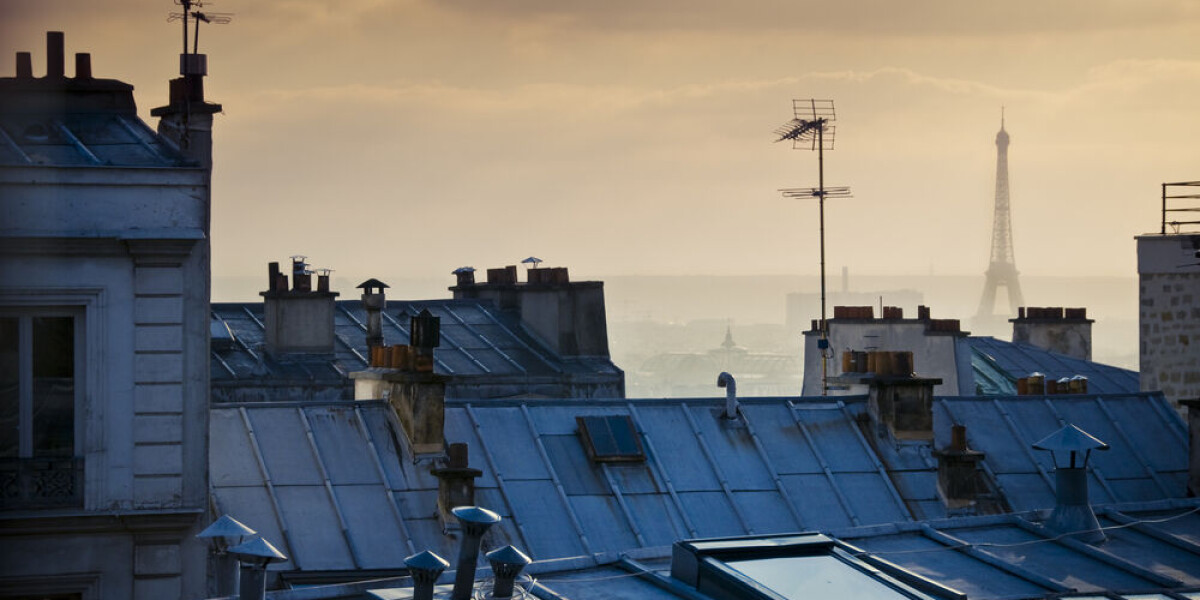
Paris zinc roof workers explain what makes their work so special
- Select a language for the TTS:
- UK English Female
- UK English Male
- US English Female
- US English Male
- Australian Female
- Australian Male
- Language selected: (auto detect) - EN
Play all audios:

ROOFERS HELP MAINTAIN PARIS’ UNIQUE SKYLINE AND MAY SOON BE ON UNESCO LIST Ever fancied taking home a piece of Paris’s famous roofscape to remember the city by? A firm of traditional roofers
in the capital offers just that as part of a 90-minute craft workshop. Les Toits Parisiens, based in Quartier Saint-Paul in the centre of the capital, is half-boutique selling zinc
artworks, and, since 2002, half-atelier for members of the public keen to recycle old Paris roof slates into their own artistic creations. The workshops are led by 51-year-old Frédéric
Cordier, himself an experienced couvreur zingueur parisien (Parisian roofer), and cost €60. When The Connexion paid a visit, his students were a couple from the Somme department. Curious
about the craft after visiting a slate mine, they were busy cutting and re-shaping an authentic Paris roof tile into coasters to take home. ZINC SKYLINE UBIQUITOUS WITH CITY Paris’s
signature zinc rooftops were largely installed in the 1800s under city planner Baron Haussmann. He chose zinc because it was cheap, malleable, weather repellent, and easy to install. Its
lightness also meant roofs required fewer frames, allowing for the creation of new attic living spaces – the chambre de bonne studios that are found throughout Paris. Welded zinc roofs have
since overtaken heavier and more expensive slate roofs in the city, making up around 80% of rooftops. They need to be replaced in their entirety every 60 to 70 years and roofers are often
called out for minor repairs too. A typical roof can take six months to renew, with all the cuts and bends made in situ in a makeshift shed at the top of scaffolding. The same work, using
the same skills, has been going on for generations now. In 2017, the traditional knowhow of the Paris zingueurs was listed in the inventory of intangible cultural heritage in France, and it
is on the 2024 shortlist to be added to the Unesco list of intangible Cultural Heritages. Read more: Paris zinc roofers selected for Unesco heritage nomination ROOFERS ARE SKILLED ARTISANS
Mr Cordier has worked in the industry for 35 years. Fearless working at height, he says that as a teenager he and his friends regularly walked along the ridge of his Paris roof in the 18th
arrondissement. He is a member of the Compagnons du Devoir, which still exists today, an organisation specifically for craftsmen and artisans tracing its roots back to the Middle Ages.
Members’ technical education includes journeying around France and undertaking apprenticeships with masters. Mr Cordier later joined and soon discovered a passion for framework. Mr Cordier
says his craft does not just involve laying zinc panels one over the other, but also more intricate skills required for gutters, eaves, joints, gables, ridges and vents. There is an element
of artistry too. Roofers often add zinc figures or ornaments to make a rooftop look more beautiful, with Mr Cordier’s ‘signature’ taking the form of an ivy leaf. Roofers spend so long up
their scaffolding that among other construction workers they are often seen as the unsociable ones. Far from it, insists Mr Cordier,who says he feels part of one big family. “This is our
home here. We do whatever we want,” he said. Roofers even have their own codes to communicate, using whistles (the sifflet du couvreur) to attract each other’s attention or suggest going for
a drink. While Mr Cordier effectively learned on the job, France has several very good training schemes to become a roofer. These include that at the Lycée Maximilien-Perret in Paris, or
going to a centre de formation d’apprentis (CFA), such as those offered by Afpa and Greta. A word of warning from Mr Cordier, however. No matter how good the course, it is no substitute for
keen observation. “These techniques are not ‘learned’ but stolen,” he said.
